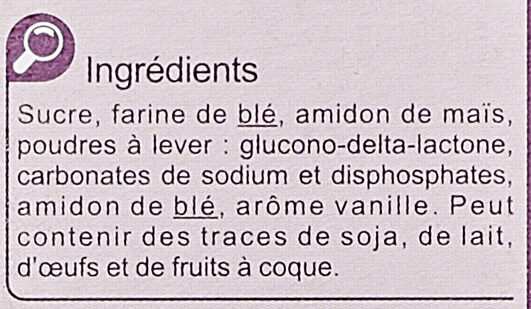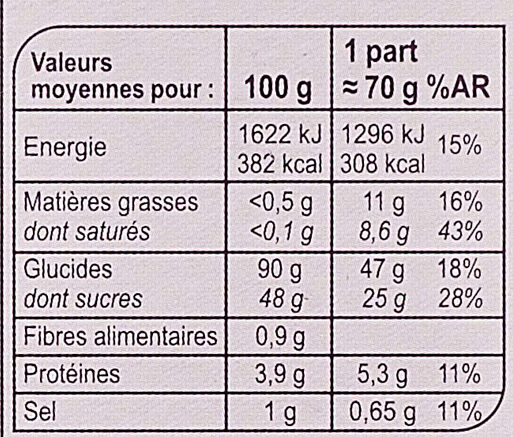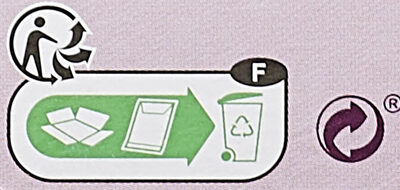Moelleux nature - Carrefour - 415 g
Aquesta pàgina del producte no està completa. Podeu ajudar a completar-la editant-la i afegint-hi més dades a partir de les fotos ja disponibles, o fent-ne més amb l'aplicació de androide o iPhone / iPad. Gràcies!
×
Algunes de les dades d’aquest producte les ha proporcionat directament el fabricant Carrefour.
Codi de barres: 3560070806850 (EAN / EAN-13)
Nom comú: Préparation pour gâteau moelleux nature.
Quantitat: 415 g
Marques: Carrefour
Categories: Snacks, Aperitius dolços, Galetes i pastissos, Pastís, Ajudants de cuina, en:Dessert mixes, en:Pastry helpers, en:Baking Mixes, en:Cake mixes
Etiquetes, certificacions, premis:
Punt verd, Fet a França
Origen del producte i / o dels seus ingredients: Cette préparation pour moelleux nature est fabriquée en France à partir de sucre originaire de l'Union Européenne et de farine de blé issue de blés français.
Productor: Fabriqué en France par EMB 33063 pour Interdis.
Codi de traçabilitat: EMB 33063 - Bordeaux (Gironde, France)
Botigues: Carrefour, carrefour.fr
Matching with your preferences
Altres dades
Altres dades: 415g e Découvrez la gamme Prêt à cuire ! Facile et gourmand, il n'y a rien à ajouter. Ajouter 3 œufs, 20cl de crème liquide Fabriqué en France | 8 parts
Preparació: 8 parts | Préparation : 20 min | Cuisson : 45 min | À ajouter : 3 œufs, 20cl de crème liquide Ustensiles nécessaires : - un saladier - un fouet à main ou un batteur électrique - un moule 1 - Préchauffez votre four à 150°C (thermostat 5) pendant 10 minutes. 2 - Dans un saladier, versez le contenu du sachet et ajoutez-y 3 œufs et 20 cl de crème liquide. Mélangez 3 minutes à l'aide d'un fouet à main ou d'un batteur électrique. 3 - Versez la préparation dans un moule graissé. 4 - Enfournez dans un four chaud et faites cuire à 150°C pendant 45 minutes. 5 - Laissez refroidir avant de déguster.
Idea de recepta: L'astuce gourmande ! Au fil des saisons... vous pouvez agrémenter votre gâteau en y ajoutant des fruits de saison avant la cuisson
Condicions de conservació: À conserver dans un endroit propre, sec et frais, à l'abri de la lumière. Pour une dégustation optimale, à consommer de préférence avant le : voir sur le dessus de l'étui.
Servei al client: Interdis - TSA 91431 - 91343 MASSY Cedex - France
Report a problem
Fonts de dades
Producte afegit per kiliweb
Última modificació de la pàgina del producte per driveoff.
La pàgina del producte, també editada per carrefour, ecoscore-impact-estimator, marilyn, openfoodfacts-contributors, org-carrefour, quechoisir, quentinbrd, roboto-app, yuka.V1A1WUthY2F2TjRrdnNVazFEVHEvZEVyN0orTlpqanVlckUvSUE9PQ, yuka.ZnFZWUxvOEF1NkF0aWZZTzNSL3g4Tnh0Mjd5a1pFam1MOVFSSVE9PQ.













